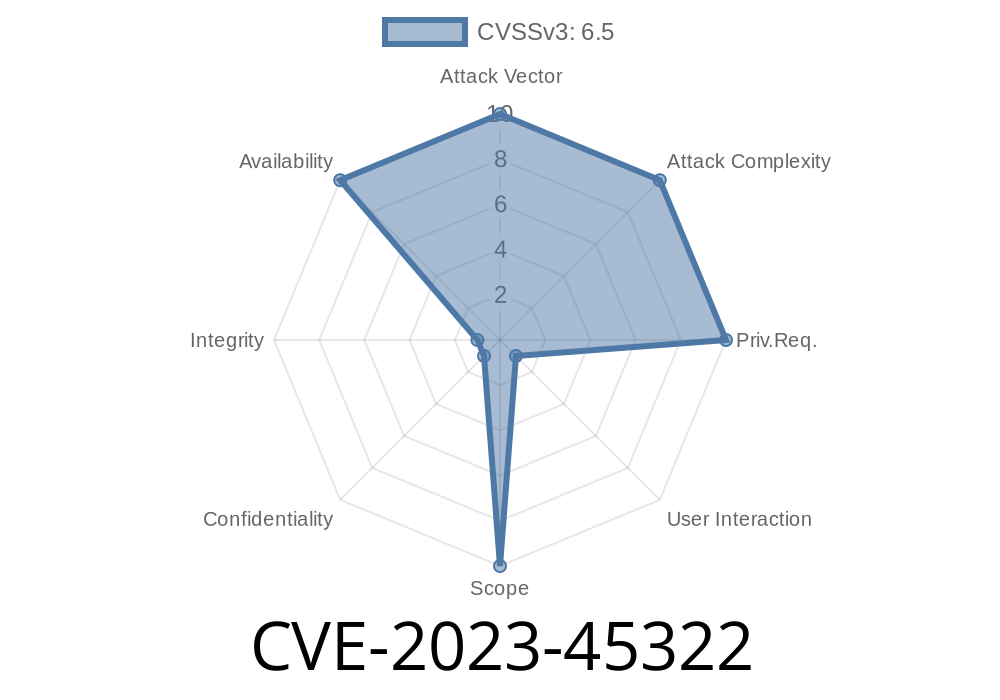In this long read, we will explore a critical vulnerability discovered in libxml2 (versions up to 2.11.5), which is a popular library used for parsing and processing XML documents. This vulnerability, assigned with the identifier CVE-2023-45322, could potentially lead to a use-after-free scenario that compromises the security of any applications using the libxml2 library.
However, it is important to note that this vulnerability is deemed by the vendor as not critical. The reason for this is because the exploit can only occur after a certain memory allocation fails, making it practically hard for an attacker to trigger it on purpose.
Still, we will examine this vulnerability, its potential impact, and the exploit details to raise awareness and ensure that developers using this library can make informed decisions when using libxml2.
Code Snippet with Vulnerability
The use-after-free vulnerability exists in the xmlUnlinkNode() function in the tree.c file. Here is the relevant code snippet:
void
xmlUnlinkNode(xmlNodePtr node) {
if (node == NULL) {
return;
}
if (node->type == XML_NAMESPACE_DECL) {
xmlFreeNs((xmlNsPtr) node);
return;
}
...
if (node->doc != NULL) {
if (node->type == XML_ELEMENT_NODE)
node->doc->nb_elements--;
if ((__xmlRegisterCallbacks) && (xmlDeregisterNodeDefaultValue))
xmlDeregisterNodeDefaultValue(node);
}
if (node->parent != NULL) {
xmlNodePtr parent = node->parent;
if (parent->children == node) {
parent->children = node->next;
}
...
}
...
}
The xmlUnlinkNode() function is responsible for unlinking an XML node from its parent and sibling nodes and updating relevant pointers. However, a use-after-free occurs when the memory allocation for node->doc fails.
Original References
- libxml2 Repository on GitHub
- xmlUnlinkNode function in tree.c
- libxml2 Changelog
Exploit Details
The exploit hinges on the node's doc pointer being used after it has been freed. As shown in the code snippet, the doc pointer is used to update the document's metadata, such as decrementing the number of elements. Moreover, the function calls external callbacks with the pointer to the node.
If an attacker is not able to control the memory allocations, it is unlikely that they can trigger this vulnerability. At the same time, this vulnerability could lead to the so-called use-after-free scenario.
Trigger the vulnerable code path in the xmlUnlinkNode function.
It is worth mentioning that the vendor’s position on this vulnerability is that it is almost impossible for an attacker to control when memory allocations fail, making it difficult to exploit the vulnerability.
Conclusion
The CVE-2023-45322 vulnerability is a potential use-after-free issue in the libxml2 library. Although the exploitability is considered low due to the difficulty in controlling memory allocations, it still presents a potential issue that developers using the affected versions of the library should be aware of.
It is essential to keep track of potential vulnerabilities like this, even if they may not have the highest severity or exploitability, as understanding potential risks ensures better security decisions in software development.
As of version 2.11.5, the vulnerability still exists. Developers using the affected versions are encouraged to monitor the updates and changes to the libxml2 library and check for any mitigations or fixes that might be released in the future. If feasible, it might also be beneficial to review the usage of the xmlUnlinkNode() function in your application code to minimize any potential impact of this vulnerability.
Timeline
Published on: 10/06/2023 22:15:11 UTC
Last modified on: 11/07/2023 04:21:45 UTC
